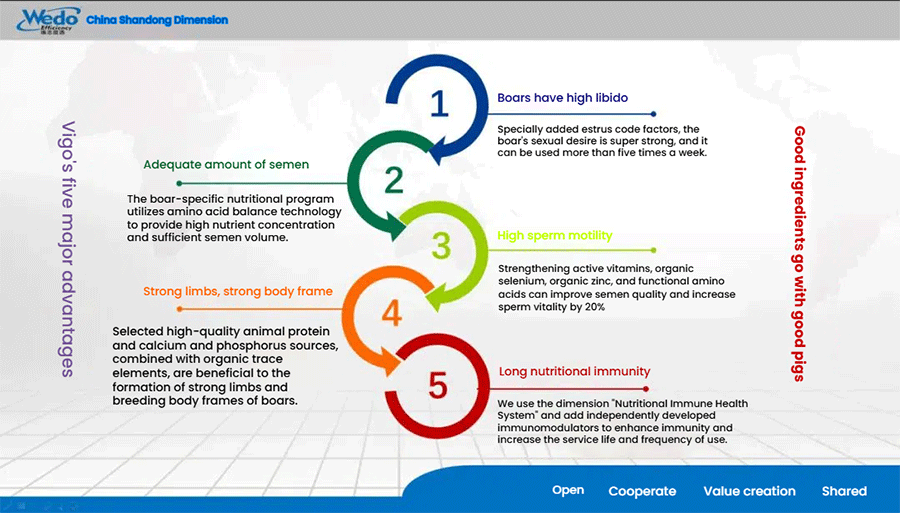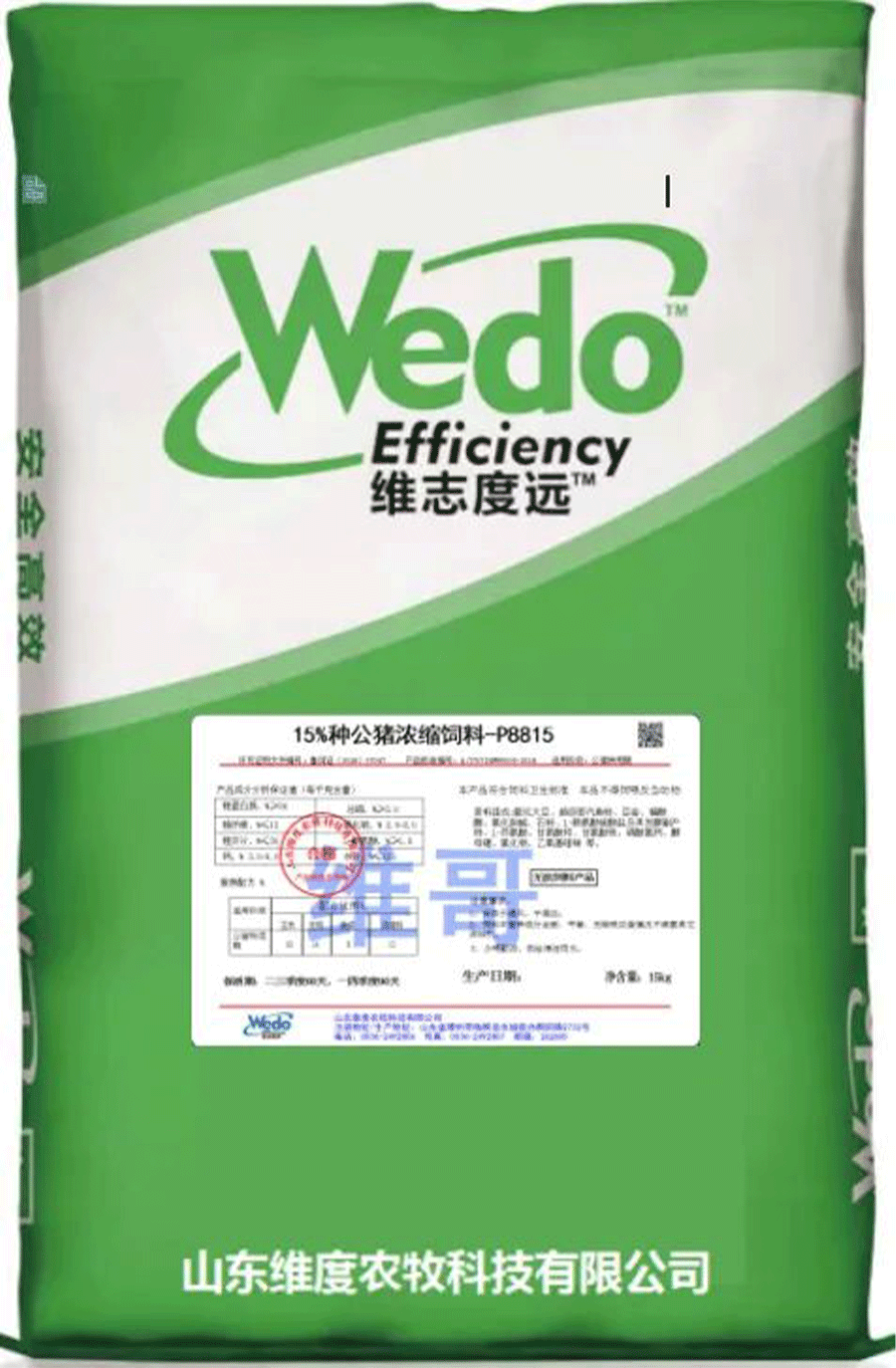As the saying goes, "a good litter of sows, a good slope of boars", this sentence reveals the important role of boars in improving the genetic progress of offspring. So, how much value does a boar have? The previously published article "The Value of High-Index Boars" proposed that based on the current world-level boar efficiency (male-female ratio 1:150), every 20-point increase in the boar index can make each terminal commodity pig offspring earn an extra 12.2 yuan, so a boar can generate up to 80,000 yuan in additional profit in one production cycle.At present, the application of artificial insemination (AI) is becoming more and more common worldwide, but AI has limited the use of boars in sow herds. In addition to semen, boars also provide tactile, olfactory, auditory and visual stimulation, which can improve the reproductive performance of sows. It can be seen that boars are very important in pig farm breeding and production. They are the engine for pig farms to make money, and to a certain extent determine the production performance and economic benefits of pig farms.Let's take a look at the important value of boars in pig farm breeding and production:1. Improve herd genetic improvementIn the future, herd genetic improvement of pig breeding systems will basically rely on high-intensity selection of sires, and quickly and widely transmit certain production performance of boars, such as growth rate, feed conversion rate and backfat thickness, which have medium to high heritability. At present, animal breeding companies usually select the best animals by measuring important economic traits and using this information to calculate genetic indices, thereby making genetic improvements. Excellent individuals will bring additional value and benefits. (Note: Boar index refers to the sum of the genetic value of each trait multiplied by the economic value to reflect the relative profit potential of each individual in the group and is used to select the best individuals.Pig farms should determine performance and select boars with the highest performance index as breeding boars.2. Shorten weaning estrus interval (WOI)Boar estrus may be related to promoting the secretion of luteinizing hormone (LH) by the anterior pituitary of sows. A sufficient amount of luteinizing hormone can promote the development and enlargement of follicles and the discharge of eggs. Sows with high luteinizing hormone secretion concentrations after weaning The weaning-estrus interval (WOI) is short. On the contrary, if the LH concentration is low, the estrus period is prolonged.Boar olfactory stimulation can guide the sow's central nervous system to release hormones and neuropeptides, which regulate the secretion of luteinizing hormone. For directly weaned sows, the LH secretion level is low. Boar stimulation can increase LH secretion, further promote follicle development, and then estrus. Studies have shown that weaned sows are more ideal when they are in contact with boars 2 to 3 times a day or are kept in isolation pens with boars.3. Improve estrus performanceBoar Boar stimulation plays an important role in the estrus performance of sows. It is generally believed that when a sow is in the state of estrus, it is in the state of estrus. The duration of the reaction varies greatly among sows (or different pig farms). Boars promote estrus performance in sows through smell and touch.Studies have shown that although the effects of boar stimulation on estrus in sows vary, full contact and frequent stimulation are the most effective. The usual practice is to drive the boar to the sow, or bring the sow into the boar pen, and contact and stimulate estrus or detect estrus through the fence. In some pig farms , drive the sows into a DMA, which is specially designed to maximize boar stimulation during the estrus period of sows and is surrounded by 4 to 6 boar pens. Experiments have shown that using this DMA during the estrus period of sows and implementing multi-boar pen stimulation can maximize the stimulation of sow estrus response (see the table below).Different estrus characteristics of primiparous sows to DMA and no boar stimulation
 Note: Different ab marks in the same row indicate significant differences (P < 0.05) (Langendijk et al. al, 2000)4. Predicting ovulation timeThe key to the conception rate of artificial insemination (AI) lies in the accurate grasp of the interval between the timing of insemination and the time of sow ovulation. Data analysis from all over the world shows that in most cases, the conception rate is higher when high-quality semen is injected 0 to 24 hours before sow ovulation. Some data show that the average time from the start of the sow's boar freezing reaction to ovulation is different (between 35 and 48 hours), especially when the boar is not present. It is inaccurate to judge the sow's freezing reflex as the beginning of the back pressure reaction. However, when the sow shows a back pressure reaction when exposed to boar stimulation, ovulation will occur in the last two-thirds of its estrus period. Therefore, when the estrus period and the estrus period (WOI) after weaning are relatively stable parameters in a pig farm, it can be used to help predict ovulation. ovulation time and optimal insemination time.From the above, we can see the important position of boars in pig farms. The nutritional regulation and feeding management of boars are also the core of a pig farm. However, due to the small number of boars, it is common to feed boars with pregnant sow feed, lactating sow feed, and even piglet feed. Due to nutritional mismatch, boars often suffer from malnutrition or excessive fat deposition, which reduces the quality of semen. Therefore, in production practice, it is necessary to provide boar-specific feed (Vigo, a high-end boar product of Wedo) to meet their growth and production needs, improve reproduction rate and service life.Vigo, a boar-specific feed of Wedo, is a high-end boar feed carefully designed by Wedo Technology Department for high-quality boars currently bred with high intensity. It has a significant effect on improving boar sexual desire, increasing semen quantity and sperm vitality, and maximizing the production value of boars.
Note: Different ab marks in the same row indicate significant differences (P < 0.05) (Langendijk et al. al, 2000)4. Predicting ovulation timeThe key to the conception rate of artificial insemination (AI) lies in the accurate grasp of the interval between the timing of insemination and the time of sow ovulation. Data analysis from all over the world shows that in most cases, the conception rate is higher when high-quality semen is injected 0 to 24 hours before sow ovulation. Some data show that the average time from the start of the sow's boar freezing reaction to ovulation is different (between 35 and 48 hours), especially when the boar is not present. It is inaccurate to judge the sow's freezing reflex as the beginning of the back pressure reaction. However, when the sow shows a back pressure reaction when exposed to boar stimulation, ovulation will occur in the last two-thirds of its estrus period. Therefore, when the estrus period and the estrus period (WOI) after weaning are relatively stable parameters in a pig farm, it can be used to help predict ovulation. ovulation time and optimal insemination time.From the above, we can see the important position of boars in pig farms. The nutritional regulation and feeding management of boars are also the core of a pig farm. However, due to the small number of boars, it is common to feed boars with pregnant sow feed, lactating sow feed, and even piglet feed. Due to nutritional mismatch, boars often suffer from malnutrition or excessive fat deposition, which reduces the quality of semen. Therefore, in production practice, it is necessary to provide boar-specific feed (Vigo, a high-end boar product of Wedo) to meet their growth and production needs, improve reproduction rate and service life.Vigo, a boar-specific feed of Wedo, is a high-end boar feed carefully designed by Wedo Technology Department for high-quality boars currently bred with high intensity. It has a significant effect on improving boar sexual desire, increasing semen quantity and sperm vitality, and maximizing the production value of boars.




